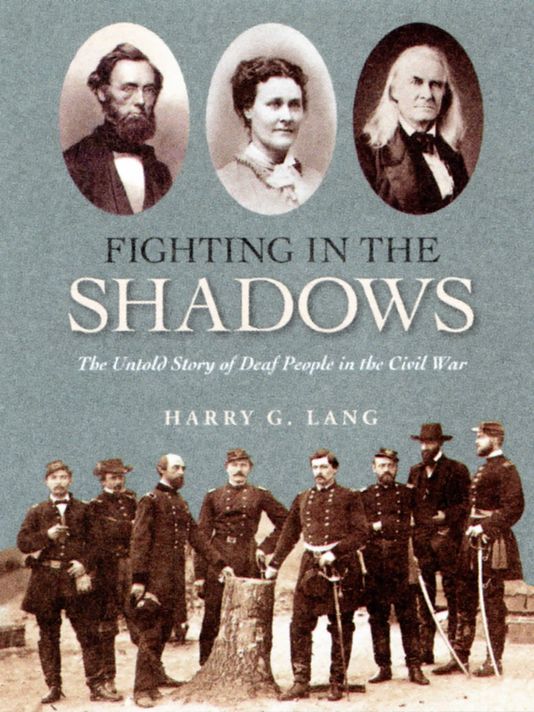Note: Harry Lang is 1965 WPSD graduate, he published his new book to the public in America.
The American Civil War played a pivotal role in bringing the nation’s deaf population out of society’s shadows, asserts a forthcoming book by a former NTID professor.
Harry G. Lang has spent a good part of his professional life chronicling the contributions and history of deaf people — shedding light on a segment of the population that Lang has described as often “invisible” to the general public.
Over the years, Lang, a professor emeritus at Rochester Institute of Technology’s National Technical Institute for the Deaf, has authored or co-authored nine books about deaf and hard-of-hearing scientists, performers, educators and writers.
Whole libraries have been written about the Civil War. But in his new book, Fighting in the Shadows: The Untold Story of Deaf People in the Civil War, Lang delves into a chapter of the bitter conflict that previously has been unexplored. In doing so, he tells of repercussions for the deaf community that went well beyond the war.
“The Civil War dramatically changed the course of deaf people’s lives. In many ways, the national crisis empowered many to believe in their own abilities,” he writes.
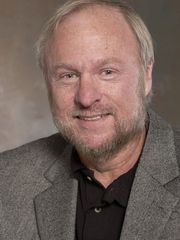
And he further explains: “It provided them with an opportunity to help dispel their image as ‘unfortunates’ and develop an identity as American citizens no longer pushed to the margins of society.”
Lang, 69, is himself deaf, resulting from meningitis at the age of 15.
He joined the faculty at NTID in 1970 — two years after NTID opened its doors — and remained a full-time faculty member until 2011.
Lang’s book — his 10th — is scheduled to be published in May by Gallaudet University Press and is the first to focus on the role of deaf people in this seminal event in U.S. history.
His own career has been one of advocating for the deaf population and telling its history.
“I view deafness as very positive. It opened up many doors for me and I feel that I opened up some minds — being deaf is not necessarily a barrier. It doesn’t prevent people from being successful,” Lang said in a recent interview.
Bringing the history of deaf people out of the shadows is a theme that runs throughout the book and beyond. The fight against discrimination and for equal treatment of deaf people continued after the war, with the immediate post-war battles focusing on deaf veterans demanding their fair share in pension payments and fighting enduring efforts to ban sign language.
Over the years, Lang has educated the general public about the contributions of deaf people to history and provided this population with role models.
“Lang’s contributions to the field are wide-ranging and far-reaching. His biographies offer insight into the lives of deaf individuals and enhance our understanding of United States history,” said Brian Greenwald, professor of history and director of the Deaf Documentary Center at Gallaudet University in Washington, D.C.
Search for history
Researching the book presented challenges for Lang because there was so little in the published histories of the Civil War about the contributions of the deaf.
Lang’s sources for his book, which runs about 250 pages and has about 1,100 footnotes, include online histories of regiments that fought in the war, correspondence housed in university libraries and the National Archives, diaries and newspapers of deaf schools and other newspapers from Civil War days.
The Gallaudet Guide and Deaf Mutes’ Companion provided biographical sketches and tidbits about the lives of the deaf and served as a forum for debating issues until that periodical ran out of money and ceased publication in 1862.
Medical regulations exempted men who were more than partly deaf, but a clear definition of what constituted deafness was lacking. Much was left to the discretion of the individual medical examiners.
Lang found that there were hundreds of soldiers who had partial or complete deafness before the war but managed to join the Union and Confederate armies. This total includes about a dozen commanders, most notably the Union’s Gen. John Gross Bernard, who oversaw the building of forts around Washington, D.C., after the first Battle of Bull Run, and Confederate Gen. Maxcy Gregg, whose death at the Battle of Fredericksburg was attributed to deafness.
But that tells just part of the story.
During the war, there were also tens of thousands of men who were deafened by artillery, concussion, disease, illness and exposure. Many of these men continued to fight after becoming deaf.
“So, deafness was a common phenomenon in the camps and on the battlefield — including temporary deafness from battle noise,” said Lang.
Theodric Gage and George P. Myers, noted Lang, were a couple of the soldiers who returned to the Rochester region after the war with deafness. Gage suffered a loss of hearing from medication; Myers was deafened — probably from disease — while captured by Confederate forces.
Another local soldier, Hezekiah F. Lacey, was deaf at the start of the war but still managed to enlist and fight at Gettysburg.
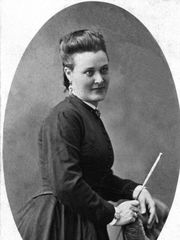
Countless other deaf people served in noncombatant roles and in local militias defending the towns where they lived.
Still others from the deaf population fought with “the pen.”
Laura Redden, who was deaf, wrote under the pseudonym Howard Glyndon as Washington correspondent for the Missouri Republican.
As an ardent abolitionist, she wrote the poem “Union Forever.”
Redden befriended President Abraham Lincoln, making visits to the White House. She also knew John Wilkes Booth and, unaware that he would become Lincoln’s assassin, gave him sign language lessons.
Deaf editor James Goodloe George’s editorial in the Richmond Messenger — a newspaper in Kentucky — about John Hunt Morgan’s Raiders stealing horses made George a wanted man. It resulted in him being chased around the countryside as they sought to hang him.
Lang’s interest in writing a book about the Civil War deepened after he obtained letters, photographs and other documents about a newspaper from the deaf editor’s great, great granddaughter.
The materials became the basis of Lang’s 2002 biography, Edmund Booth: Deaf Pioneer, which told how Booth’s Iowa newspaper, The Anamosa Eureka, began focusing on the evils of slavery prior to the Civil War and during the war published Union soldiers’ accounts.
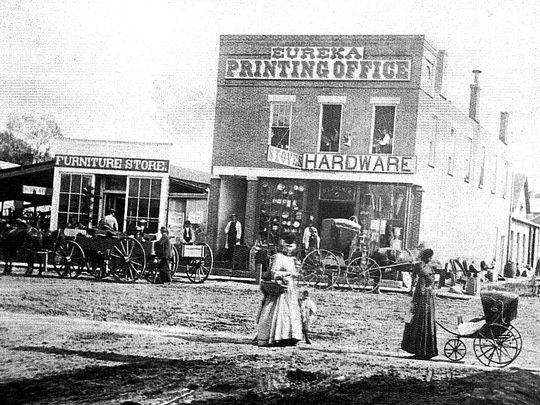
Making his way
Lang’s own career is that of a self-made man who, once he realized his potential, became an ardent advocate for the deaf and leading chronicler of the history of deaf people in the United States.
The son of a mail carrier, Lang had no plans to pursue a college education, and was discouraged by his high school counselor from doing so.
But after Lang’s loss of hearing, he completed high school at the Western Pennsylvania School for the Deaf, and with funds from the Vocational Rehabilitation Department of Pennsylvania attended Bethany College in West Virginia.
Graduating with a bachelor’s degree in physics, Lang landed a job in the science department at the newly opened NTID at RIT.
Lang taught physics for nearly 20 years and chaired the NTID Physics Department from 1980 to 1985. He also headed NTID’s Office of Faculty Development while teaching graduate courses in science and math education.
He eventually served on the staff of the Master of Science in Secondary Education teacher preparation program.
While at NTID, Lang earned a master’s from RIT in electrical engineering and a doctorate in science curriculum and teaching from the University of Rochester.
He was later awarded an honorary doctorate by Gallaudet for his contributions in education and in 2006 received RIT’s Trustees Award for his academic scholarship.
Lang’s attention turned to history after meeting Stephen Hawking, the renowned theoretical physicist, at a 1984 conference sponsored by the American Association for the Advancement of Science.
Hawking, who in 1963 contracted motor neuron disease and was given two years to live, not only has survived but has written such international bestsellers as A Brief History of Time.
As Lang tells it, Hawking said to him, “It must be difficult being deaf.”
“It started me thinking about how people view deaf scientists or any disabilities,” Lang noted.
Leaving his mark
ang became determined to tell the stories of deaf people.
Playing off the initials of the National Institutes of Health, Lang likes to describe his mission as “NIH” — the equivalent of searching for a needle in a haystack.
Walking through stacks of books in various libraries, in the United States and abroad, Lang identified almost 2,000 deaf scientists, dating back to the Renaissance.
Some of them became the basis for his first book, Silence of the Spheres: The Deaf Experience in the History of Science, published in 1994.
He teamed up with his wife, Bonnie Meath-Lang, to write Deaf Persons in the Arts and Sciences. A Biographical History, published in 1995. They met after she joined the NTID faculty in 1972 as an English teacher, and they were married a year later.
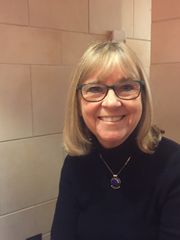
During her last 20 years at NTID, Meath-Lang, who has no loss of hearing, was the artistic director of the Performing Arts Program.
Lang’s thirst for history has also found expression in co-authoring From Dream to Reality: The National Technical Institute for the Deaf.
And Lang is co-author of Moments of Truth: Robert R. Davila, The Story of a Deaf Leader. Davila served as an assistant secretary of education under President George H.W. Bush and went on to be CEO of NTID and president of Gallaudet.
In A Phone of Our Own: The Deaf Insurrection Against Ma Bell, Lang tells how the deaf community made a breakthrough in communications with the development of a teletype system equipped with acoustic couplers.
A coupler converts typed words and numbers into electric signals and — at the other end of the conversation — converts the signals back to typed words and numbers.
The three individuals — Robert H. Weitbrecht, James C. Marsters and Andrew Saks — who developed and marketed this technology showed how technology can be inclusive for deaf people but did so in the face of opposition from the telecommunications industry.
In praising Lang’s work, Greenwald, the historian, said that he “offers evidence of the great lengths deaf people have gone in order to take control of their own destiny, at times to the discomfort of hearing society.”
In Teaching from the Heart and Soul: The Robert F. Panara Story, Lang tells the story of an inspiring educator who was the first deaf faculty member at RIT and one of the founders of deaf studies. Panara will be featured on a stamp being issued by the U.S. Postal Service, in memory of his contributions.
Jeanne Behm, coordinator of the RIT American Sign Language & Deaf Studies Community Center, praised Lang for writing the history of deaf people, and in doing so, providing role models for teachers of deaf students.
“We have a rich history,’ Behm said.
JGOODMAN@Gannett.com
This article is published on Democrat and Chronicle, January 11, 2017.
